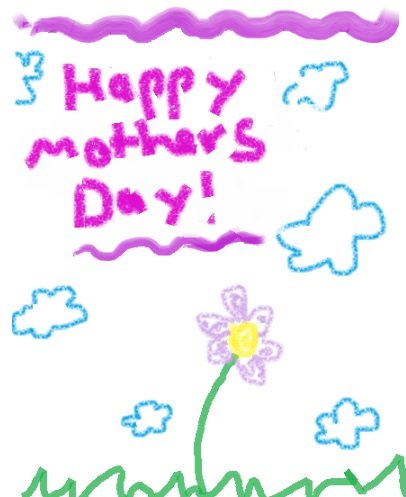It’s Mothering Sunday this weekend! This day is celebrated on the fourth Sunday of Lent each year, falling three weeks before Easter. The day was originally a religious day when people would visit their ‘mother’ church, but later it also became a day to celebrate motherhood. Mothering Sunday is now intertwined with the secular celebration Mother’s Day and the two names are often used interchangeably. Join us to explore the origins of the day and enjoy our ‘correct word’ exercise and gap fill games.
Origins of Mothering Sunday
Originally, Mothering Sunday was a day when people would go to their ‘mother’ church, the church where they were baptised or their nearest cathedral. This was called going ‘a-mothering’. Servants were given the day off to go to church with their families.
As time went on, Mothering Sunday became a time to celebrate motherhood and children would give gifts to their mothers. This turned into a secular celebration of Mother’s Day and the tradition of gift-giving was born, joining the two celebrations into one.
The Secular Celebration of Mother’s Day
Many people now think Mothering Sunday and Mother’s Day are the same celebration, but they are in fact two separate days which have become celebrated together and for most people, conflated into a special celebration day for mothers.
For people who have lost their mothers, this is also a special day to remember them and honour their memory.
For children, this is a fun day where they give their mothers gifts that they have bought or made themselves, along with cards.

1. A homemade Mother’s Day card – image source
Many children like to give their mothers ‘breakfast in bed‘, giving the mum a long, relaxing morning, while it is also traditional for children to make a meal for their mother. Schools often have a lesson where children can craft their own gifts for their mothers and create their own cards.
Mother’s Day is also a time when children can enjoy making cards and giving presents to their parents, grand-parents and loved ones.
In non-traditional families, perhaps without a mother, or with multiple mothers or fathers or grand-parents, the day is about celebrating family and giving thanks to the main care-givers as mothering figures in a child’s life.
Adult children take their mothers out for lunch or dinner and traditionally buy them flowers. Many bouquets of flower are sent on Mother’s Day – this is the busiest day of the year for florists and for restaurants, busier even than Valentines’ Day!
Mother’s Day Apostrophe
Mother’s Day is normally spelled with the apostrophe before the ‘s’ to indicate that the day belongs to an individual mother.
If the apostrophe was used after the word ‘mother’ to create ‘Mothers’ Day’, this would indicate that the day belongs to all mothers in general.
When celebrating Mother’s Day, most people are thinking of their own mother when they buy or make a card, rather than celebrating all mothers in general. This is why we place the apostrophe before the ‘s’ to indicate individual possession.
The apostrophe placement on a plural word can often cause confusion because the end ‘s’ does not need another ‘s after it to create the plural, only an apostrophe.
Gap Fill Exercise for Mother’s Day
Originally, Mothering Sunday was a day when people would go to their ‘mother’ …(church)…, which was the …(church)…. where they were ….(baptised)….. They might also go their their nearest ….(cathedral)….. This was called going ‘a-mothering’.
Workers in the big houses, called …(servants)…. were given the …(day off)…. to go to church with their ….(families)….
As time went on, Mothering Sunday also became a time to celebrate …(mothers)…. and children would give …(gifts)… to their …(mothers)… This turned into a secular ….(celebration)… of Mother’s Day and the ….(tradition)… of gift-giving was born, joining the two celebrations together.
Many people now think ….(Mothering Sunday)….. and ….(Mother’s Day)…. are the same celebration, but they were originally two …(separate/distinct/different).. days.
To celebrate Mother’s Day, children make …(cards)… and …(gifts/presents)…. to give to their mothers. They also often make ‘…(breakfast).. in bed’ for their mother and sometimes cook them a …(meal)…. Adult children often take their mothers to a ….(restaurant)…. for lunch or …(dinner)…. and buy them a bouquet of …(flowers)…. Other common presents include boxes of chocolates and bottles of ….(wine)….
Mother’s Day is the …(busiest)…. day of the year for …(florists)… and for restaurants.

It is traditional to make your mother ‘breakfast in bed’ on Mother’s Day – image source
Correct Word Exercise for Mother’s Day
Originally, Mothering Sunday was a day when people would go to their ‘mother’ church/cottage/house, which was where they were living/baptised/born.They might also went to/go to/gone to their nearest cathedral/church/restaurant. This was called going ‘a-mothering’.
Workers in the big houses, called aristocrats/mansions/servants were given the day off/day on/day from to go to church with their masters/families/pets.
As time went on, Mothering Sunday also became a time to celebrate mothers/fathers/homes and children would give gifts/jobs/food to their friends/mothers/teachers. This turned into a secular celebrate/celebrity/celebration of Mother’s Day and the tradition/traditional/trade of gift-giving was born, joining the two celebrations together.
Many people now think Mother’s Day and Mothering Sunday is/are the same/sane/different celebration, but they were originally two similar/separate/identical days.
To celebrate Mother’s Day, children make/made/match cards and gifts to given/give/gave/ to their mothers. They also often make ‘food/dinner/breakfast in bed’ for there/they’re/their mother and sometimes cook them a meal. Big/Adult/Tall children often take/lead/took their mothers to a restaurant for lunch or dinner and buy them a bouquet of flowers/chocolates/wine.
Mother’s Day is the busiest/busyest/quietest day of the year for florists/flowers/shops and for restaurants.
Share your thoughts on Mothers’ Day
How will you bring Mother’s Day into the EFL classroom?
Did you know the difference between Mother’s Day and Mothering Sunday?
Can you think of more vocabulary that could be useful for this special day?
Are there any words or phrases you need clarification on?
Attributions
- Mother’s Day Card by Urbanphase [CC0], from Wikimedia Commons


